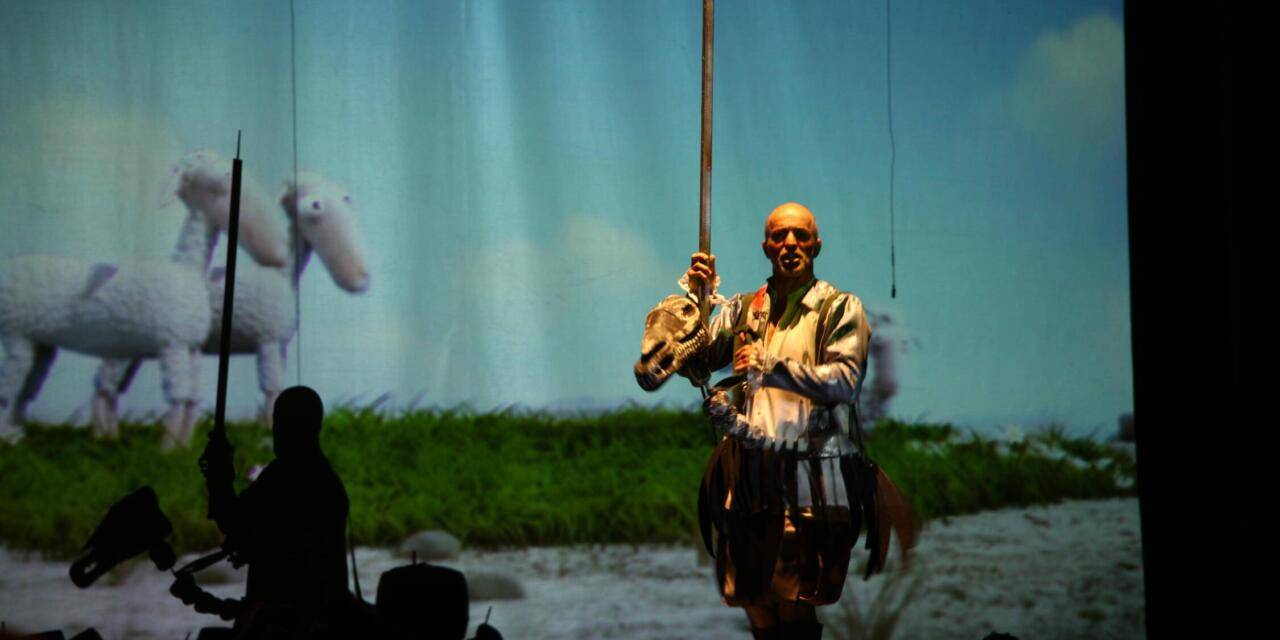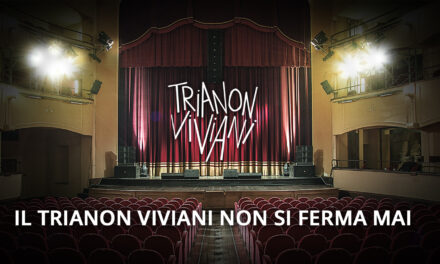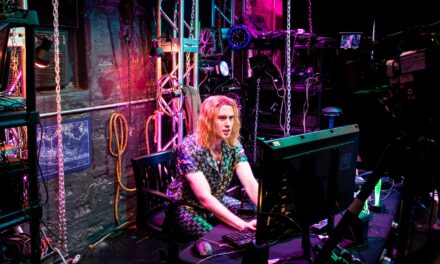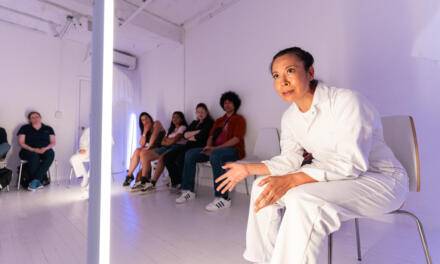It has become common practice to spend time on social networks at certain hours of the day, because these platforms, besides having many advantages, give us the chance to follow the latest news along with topical and trending events.
And we see all of them, but we “click” and watch those that capture our attention.
The more fun we have on Instagram, the more bohemian we live on Twitter. Chaotic events are full of irony, denial, and rebellion. In short, everything that is relevant in the world.
Azerbaijan State Academic Musical Theatre’s play Psycho shows us what we see on Twitter/X.
Psycho
Psycho is a state of mind. It is a combination of emotions that significantly affect a person’s behavior and way of perceiving the world. In the play, chaos and disorder are felt, and this irregularity makes the audience think and makes them create an associative plot in their minds. Tango dance, Don Quixote’s attack on the sheep, an announcer connecting to the show from the TV screen, the surrounding of Don Quixote by “freemasons”, an ending like the crucifixion of Jesus Christ – seemingly incongruous events seem to show the mood of the world we live in. And the director Er Togrul Kamalov calls this “psycho”.
The play is full of irony. The irony to the world, irony to society, irony to the audience, irony to himself.
The play is based on the motives of the novel Don Quixote and conventionally consists of five parts: The battle with the windmills, The dream of being a shepherd, The fight with the sheep, The tango, The final monologue, and finally The crucifixion.
At the beginning of the play and between certain parts, characters perform rituals, and the subsequent events of the play are “read” as the result of the shaman’s ritual. In a big sense, what happens on the stage is the play of Shaman (Zaur Aliyev), the only character who does not change his dress and identity during the play. It is not accidental that the first scene takes place in a cemetery.
Scattered skeletons allow us to say that. As if the shaman creates other characters from these bones and gives them spirit.
The play begins and we meet primitive people without speech on the stage. They try to communicate with each other in a language that we can not understand, on the other hand, they try to dress. The Shaman determines the status of three people in the world and we can see the characters created by Cervantes – Don Quixote, Sancho Panza, and Dulcinea.
Why shaman? Shamanism is a primitive religious belief. Shamanism arose when people with special social status appeared. The Shaman is the keeper of the tribe’s important information, communicates with spirits, receives instructions from them, and performs rituals.
It is impossible not to notice his small touches in certain parts of the play. He is like an assistant director, but he is on the stage. He gives instructions to the actors, even directs them, and directs the events.
When you enter the theatre building, you can feel that the play is out of standards. ID verification to confirm age 18+, the symphonic Don Quixote by Gara Garayev sounds in the background, smoke spreads from the stage to the hall, someone dressed as a servant walks in the hall – such details create the atmosphere before the play, and gives us signs of what we will see in the play.
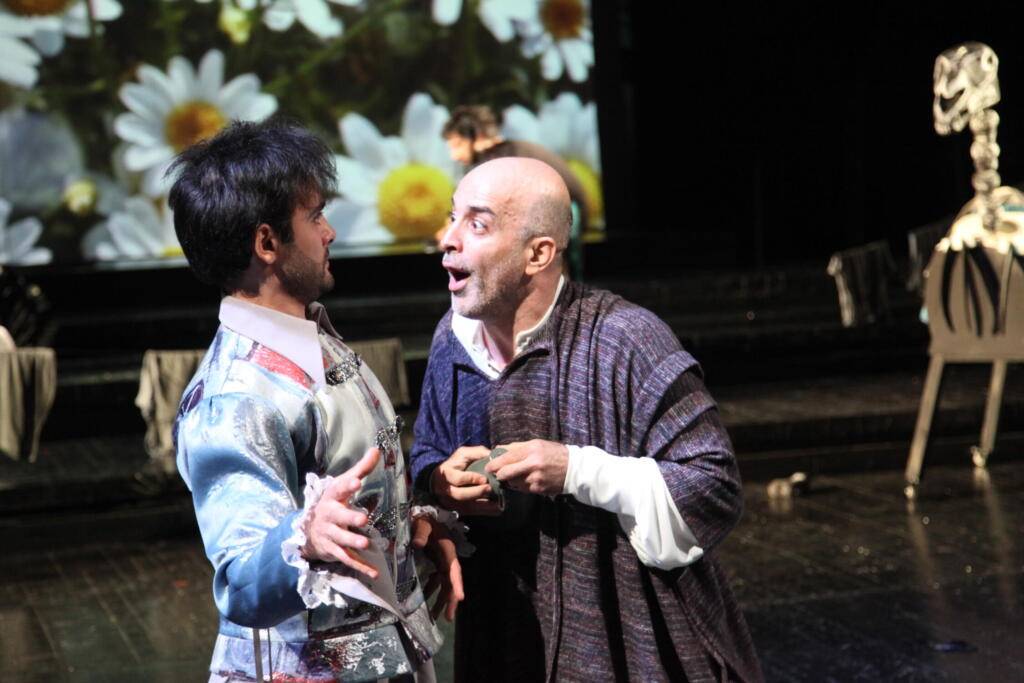
Press Photo courtesy of Azerbaijan State Academic Musical Theatre.
Equality and social status
A few minutes before the start of the play, a woman dressed as a servant and holding a broom starts walking in the hall. She cleans and talks with people. The interesting thing is that some people do not see the woman or do not realize that she is part of the play. Until the woman raises her voice and moves to the center of the stage and starts talking. It turns out that she is Dulcinea. She is a peasant woman who is Don Quixote’s, imaginary lady. She is an abstract. She is the invisible force that controls all the adventures of Don Quixote.
Sometimes she appears as a “servant”, sometimes as a person of high status, and sometimes as a baby. She changes a lot during the play. She becomes a peasant or a prince. Such changes are a sign that people’s social status is not important in life.
In the second part, which I call The Dream of Being a Shepherd, we observe the change of roles of the actors. Although Sancho Panza, who wants to become a governor, serves Don Quixote, of course, he also dreams of being in a high position. Everyone has free thought and life like Don Quixote. And everyone can dream and realize this life. That’s why the director makes such a change. Until this moment, we see actor Nijat Ali as a servant, but a sudden change turns him into Don Quixote.
Everyone is a human, regardless of gender, race, religion, language, belief, nationality, and wealth. The placement of human skeletons like small mounds on the right and left sides of the stage symbolizes death.
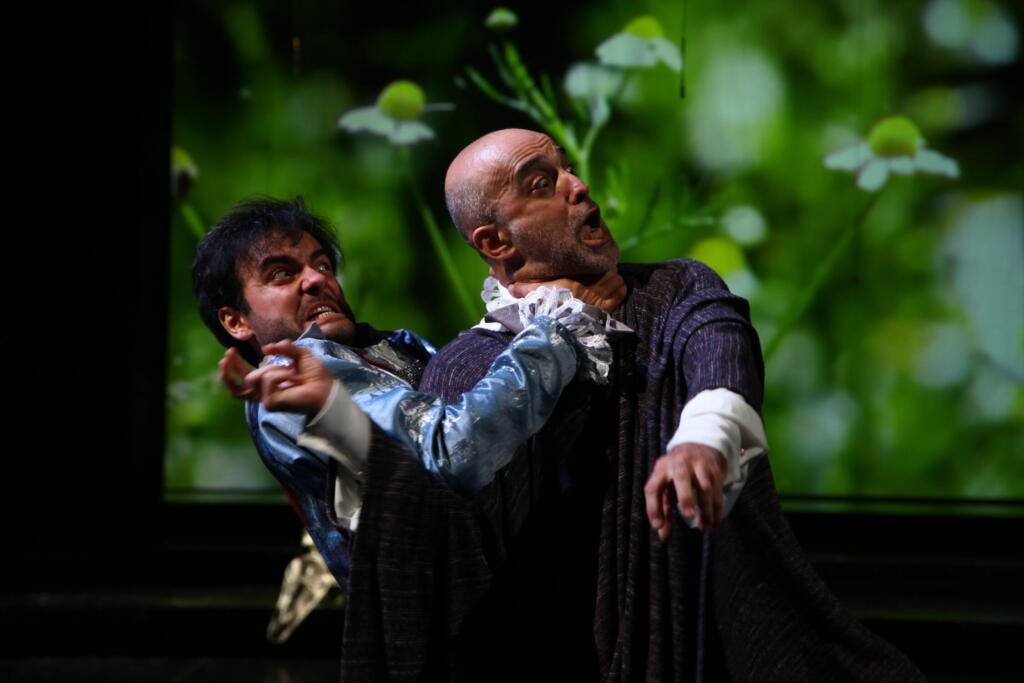
Press Photo courtesy of Azerbaijan State Academic Musical Theatre.
The War
Don Quixote’s attack on the sheep reminds me of meaningless wars where guiltless people are sacrificed. The description and continuation of this “war” is shown by a woman on the screen. The TV on the stage can be considered a publicist border. The director wants to bring life outside the theatre building to the stage first by bringing the video images on the screen and the news on the TV to the meaning level of the play. The fast-talking woman on TV is the mediator between the stage and life, she is the news presenter who delivers this “war”. Talking fast is probably the embodiment of endless wars. And the meaninglessness of what is said about these wars.
Pause
The play consists of two acts, but the curtains do not go down and there is no break during the transition. This piece between parts is both a break and a part of the play. Actors undress their characters, become themselves, and then return to their routine lives. They move away from Cervantes’ objective conditions of play and become subjective. They call each other by their names. At this time, on the stage, we do not see the characters of Cervantes. We see the actors preparing for the next part of the play. They eat food, drink water, and even receive phone calls. Perhaps, we are the cause of this break. The desire to quickly dominate every aspect of our life. The speed and comfort of technology have destroyed people’s ability to be patient. People want to finish everything quickly and it is increasing day by day. Perhaps, because of the audience’s impatience, the director does not want to separate them from the atmosphere of the play.
Tango
Sancho Panza and Dulcinea are in the spotlight. Now Sancho represents the woman, Dulcinea the man. It is not surprising. One of the things we see every day on the trending topic and explore page – two young people who represent LGBT, a group different from the majority of society, play tango by changing “positions”.
Tango is the dance of love. It is the meeting of two people by feeling their whole bodies in one space. But why Tango? Rodolfo Dinzelin says that tango denies mathematics. In this play, the tango of young people is representing LGBT and symbolizes their world and denies reality. Don Quixote performed by Parviz Mammadrzayev shows us today’s free-thinking youth. Like a Twitter user trying to get into the “trend topic” section with the topic he objected to.
Although social media is called social, it is a space that separates people from each other, from reality, and makes them lonely with their individual thoughts.
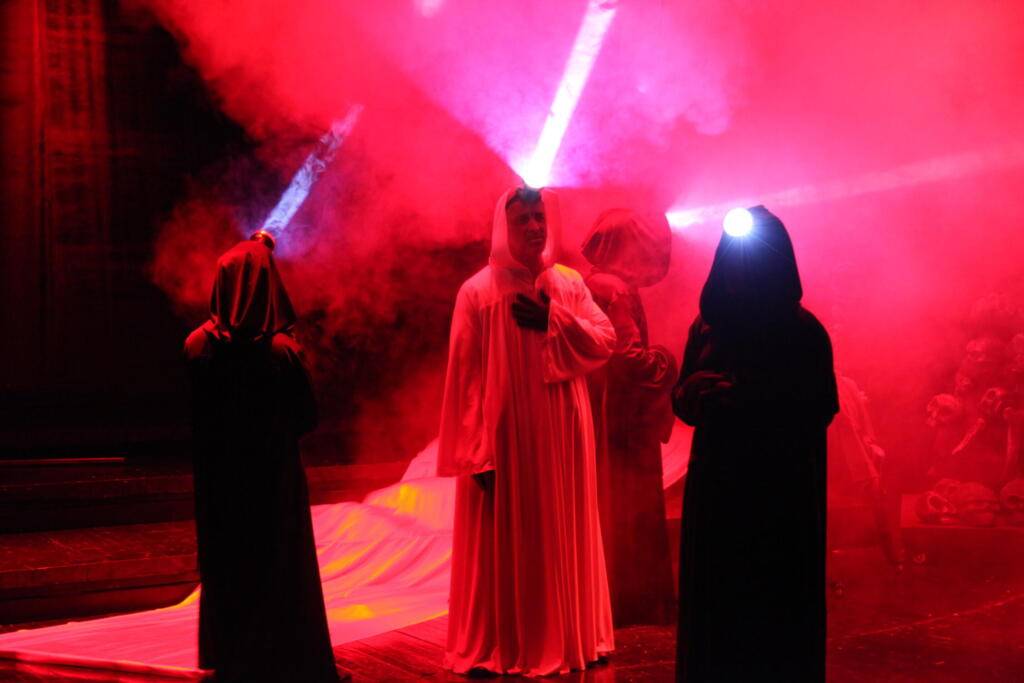
Press Photo courtesy of Azerbaijan State Academic Musical Theatre.
The mystical monologue and the end
Psycho gives political, cultural, and enlightening messages:
Do not discriminate. Treat all creatures humanly. Even if you dent it, avoid being cruel. “God, forgive them. They don’t know what they are doing”
Freedom of speech and expression is one of the basic rights given to people in democratic countries. Today, people share their own thoughts through social media. We have the opportunity to share any event, give feedback, to express our thoughts, but within the principles of respect and civility. Every day, hundreds of people become the object of reasonless criticism, lynched, insulted, and criticized. While trying to express free thoughts and ideas like Don Quixote, he is killed by the society that condemns him. That is the conflict. Don Quixote’s free thought, life, and the masses who unreasonably condemned him.
At the end of the play, we hear Don Quixote’s protest. The reason for his death is this society and criticism…
This post was written by the author in their personal capacity.The opinions expressed in this article are the author’s own and do not reflect the view of The Theatre Times, their staff or collaborators.
This post was written by Minakhanim Gurbanova.
The views expressed here belong to the author and do not necessarily reflect our views and opinions.

